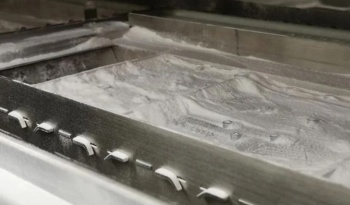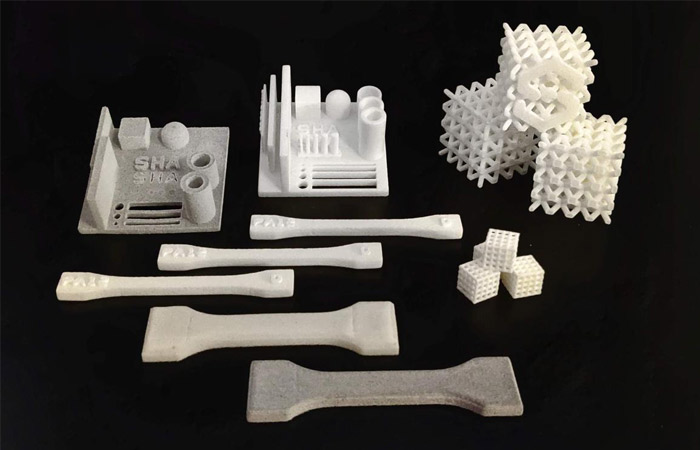
Italian manufacturer Sharebot has announced a new update for its SLS SnowWhite2 3D printer that will allow users to mix two materials during a single print. Specifically, they will be able to design parts with two polymer powders from the offered range. The company has remained rather discreet about this update but it is important to highlight this development; it is indeed very rare to be able to mix materials in selective laser sintering (SLS). Sharebot is among the first to offer this option which should unblock some constraints for professionals and manufacturers.
It has been two years since Sharebot unveiled the new version of its SLS machine, the SnowWhite2. It is a professional 3D printing turnkey solution that is compact and easy to use. The objective was to offer an alternative to the larger industrial machines, which are expensive and heavy to deploy. The SnowWhite2 offers a small printing volume, 100 x 100 x 100 mm, and is now compatible with PA11, PA12 and TPU powders.

The SnowWhite2 3D printer is compatible with PA12, PA11 and TPU (photo credits: Sharebot)
Users of this SLS machine will now be able to combine two powders for the same print. Sharebot’s release states, “With an update it is now possible to use two different materials for the creation of sintered objects (SLS). Researchers will now have the possibility to control both the movement of the recoater and of each single powder distribution tank through intuitive and easy-to-manage commands, so from today they will have the possibility to test and create multi-material objects in a simple and intuitive way.”
That being said, at this time the Italian manufacturer is not saying too much about the machine. For example, it is not known whether all the powders will be compatible with each other – everything suggests that they will be; nor is it known how the powders will be sorted in the bin. During the post-processing stage of de-powdering, how will the two polymers be separated? Can we expect to have as high a powder refresh rate as with a single material? There are still many unanswered questions, but Sharebot’s proposal is interesting because this is one of the limitations of SLS. Some manufacturers, such as Aerosint for example, are trying to circumvent this barrier by developing processes to combine several powders at the same time. In any case, we will not fail to follow this novelty closely and see how the additive manufacturing market reacts! In the meantime, find more information on the SnowWhite2 machine HERE.


